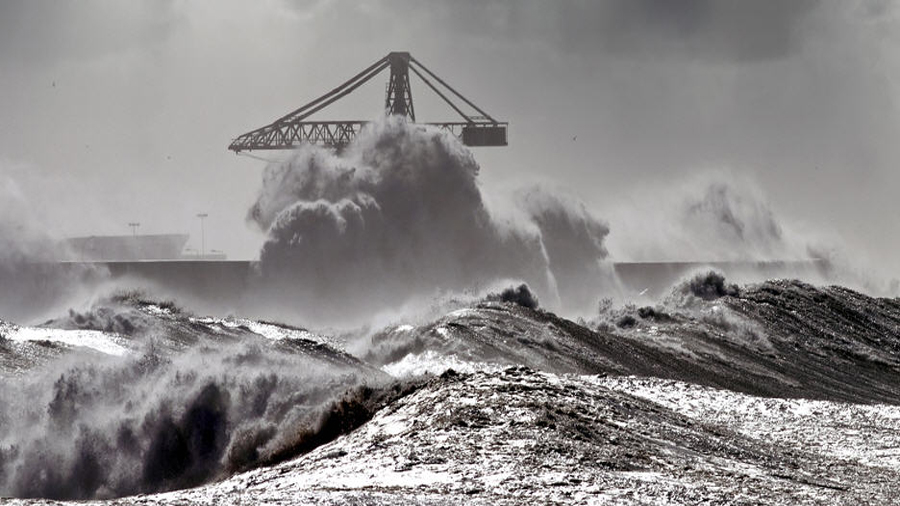
Copper and iron ore prices bounced back on Friday after customs data showing a sharp increase in imports by China as the country’s winter anti-pollution program cuts down domestic refinery and blast furnace production.
In brisk trading New York Comex copper for delivery in December added nearly 1% from Thursday’s settlement price touching a high of $2.9915 a pound ($6,595 per tonne). Copper is still down sharply for the week after suffering its worst one-day decline in almost three years on Tuesday.
The fact that copper concentrate imports climbed to a record high in November does not tally with this argument, however. It points rather to an ongoing high level of refined copper production in China
November customs data from China showed import volumes of unwrought copper rose sharply totalling 470,000 tonnes during the month, up more than 42% from October and the highest since December 2016. While imports were up 23.7% from November last year, cargoes are down some 5% over the first 11 months of 2017 to 4.24m tonnes compared to the same period in 2016. Full year imports in 2016 hit a record 4.94m tonnes.
Shipments of copper concentrate in October increased slightly from last year to total 1.78m tonnes in November, a new monthly record and up nearly 30% from October’s disappointing figure. Year to date Chinese concentrate imports are up moderately from last year. China consumes nearly 50% global copper output.
“Chinese traders appear to have bought more copper abroad because some copper smelters in the country have reduced their production for environmental reasons or because the traders expect production to be cut,” Commerzbank analysts said in a note.
“The fact that copper concentrate imports climbed to a record high in November does not tally with this argument, however. It points rather to an ongoing high level of refined copper production in China.”
China’s iron ore imports rose in November even as steel mills are cutting output as part of a government drive against pollution as some analysts said traders were stockpiling inventory
China consumes more than two-thirds of the seaborne iron ore market and produces as much steel as the rest of the world combined. Beijing’s war on smog has concentrated on the country’s steelmaking hubs near the capital where mandated cuts of as much as 50% came into effect in October.
Imports of high-quality iron ore fines and lump ore from Australia, Brazil and South Africa jumped 19% from October to 94.45m tonnes last month. November imports were up 2.8% from a year ago after topping 100m tonnes in a single month for the first time in September.
Total shipments for the first 11 months of the year are up 6% to 990m tonnes putting the country on track to top record imports in 2016 of just over 1 billion tonnes.
China’s iron ore imports rose in November even as steel mills are cutting output as part of a government drive against pollution as some analysts said traders were stockpiling inventory.
Iron ore imports “were not necessarily just by steel mills but could have been also purchased by traders,” said Helen Lau at Argonaut Securities in Hong Kong.
The Steel Index benchmark price for Northern China 62% Fe ore climber 3% on Friday to trade at $68.40 a tonne. While down sharply from highs struck early in 2017, iron ore has recovered by 19% from lows hit two months ago. Year-to-date iron ore has averaged $70.60 a tonne compared to $56.50 over the course of 2016.
2 Comments
Robert_S_Stewart
Here we go again. China buys minerals and metals on the open market at rock bottom prices having forced the markets into recession by halting purchases for a long spell. This disrupts the orderly production, disrupts sales and destroys the planning of long term resource and manufacturing plans.
Then prices are driven lower again, they jump in and buy more for a large stockpile. Everyone gets stupidly excited into thinking they are going to continue 10% GDP growth, then they stop buying again.
Who is left holding the bag on finance for the large scale investments needed to operate mines when the buyers do not need their production?
Wake up mineral producers in the West. China is not playing long-term for global stability in the markets. They are manipluating their currency to produce low cost garbage further destroying the manufacturing markets in the West. They purhase cheap metals from the West, they drive the miners down again by halting purchases. When will the West learn the game?
STOP SALES TO CHINA IF YOU WANT TO SURVIVE. They are not part of the West’s orderly markets that took centuries to create, sustain and control over centuries.
Rod B
Fric, you need to look at the price charts for iron and copper and re-write this article.